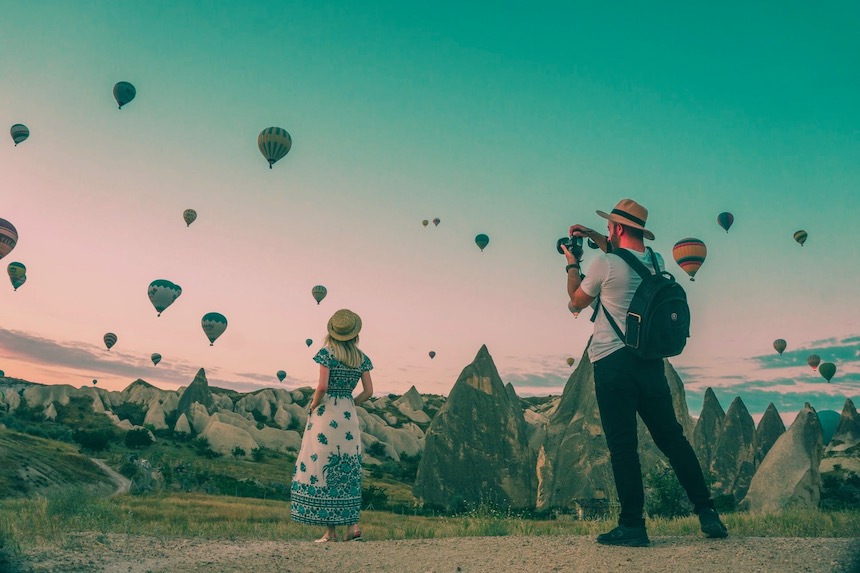
Let’s face it: the COVID-19 pandemic has changed the world’s wayfaring ways in the blink of an eye. Luxurious vacations and spontaneous travel have been scrapped from our dictionaries and words like “workation” and “virtual travel” are quickly becoming the new norm. But the fact remains, that the world is reopening sooner than expected and most of us are already planning our next vacation. But the question is how to plan and where to start?
Here’s everything you need to know about restarting travel in a post-COVID-era.
1. Choosing Your Destination
This travel slowdown is a much needed moment to pause and think about how we want and need to travel in the future. Though you may not be able to travel all the way across the globe to the destination of your choice, this might be the right time for you to discover your backyard and what’s next door.
The Rise of Domestic Travel & Travel Bubbles
Before the spread of the COVID-19 outbreak, museums, galleries, and historical monuments around the world were flooded with visitors throughout the year. However, with the current turn of events, a significant change has been observed to travel locally than internationally.
About 50% of countries worldwide have hit the initial milestone of welcoming domestic travelers post lockdown. Road trips, hikes, staycations, and closer to home experiences are increasingly becoming popular and are being preferred for the pure sake of safety and convenience. There’s also a visible preference for outdoor experiences over indoor ones due to the better scope of social distancing.
What’s more? Travel bubbles also known as travel corridors and corona corridors have cropped up, vying travelers with deals and freebies. Japan, Greece, Italy, France, and Spain are a few countries that have come a long way and are currently the safest options depending on whether they have expanded their travel bubbles to your home country.
With the current turn of events, Headout an online marketplace for tours and experiences has created a Global Travel Reopening Dashboard which provides an extensive overview of how each country and landmark around the world is operating through the crisis. Use the dashboard tracker to more about the safety precautions in place before you pick your destination.
2. Prepping for Travel
The New Packing Essentials
Carry your own ‘COVID essential kit’ before stepping out of your home. Make sure this kit contains a portable thermometer, PPE suits, face masks/shields, gloves, and hand sanitizers. Remember: Safety above all and no compromise must be made about that.
Travel Insurance Is Priority
Travel Insurance should be at the very top of your bucket list, right when you decide where you want to fly next. One thing that the COVID-19 pandemic has taught us is to be well prepared for all sorts of uncertainties. We cannot predict the future, however, we can be ready for what may go wrong. Pick a Travel Insurance that has you covered all round – be it flight cancellation, accommodation, and any unforeseen medical bills.
Book (Everything) in Advance
Before the pandemic, the Colosseum had an average of 6 million visitors while the Eiffel Tower welcomed about 7 million tourists annually. Today, these venues have reopened with a limited capacity where entry is now strictly monitored and timed.
For this very reason, it is highly recommended to book your tickets in advance for a relaxed and seamless experience and also choose ones that have a flexible cancellation policy. We recommend timed entry tickets to avoid overcrowding at the ticketing office. This way you can limit contact with others, skip the line by avoiding long queues, and enjoy the rest of your visit.
Say Hello to Private Tours
Many attractions, museums, and other cultural organizations have introduced private tours in a reduced capacity. This will ensure a splendid experience, barring the risk of infecting yourself on a large group tour. Social distancing can be managed effectively alongside an opportunity to interact with fellow travelers on the go!
3. While You’re Traveling
Social Distancing and Safety Precautions
Traveling today seems like a big risk but is definitely possible and completely safe if you do things the right way. Social distancing is one of the key factors. A safe space of a minimum of 2 meters must be maintained between you and other fellow travelers. Always ensure to follow the markings and signage placed within and outside the venue – creating a safe space for all.
Ensure your hands are washed frequently and sanitizing stations within the venue are availed whenever necessary. Most of the attractions have temporarily suspended the use of cash payment to avoid direct contact. However, you are more than welcome to go ahead with contactless payment options or even the use of debit/ credit cards.
Check for Updates in the City and Have Flexible Plans
Make sure to do your research and stay updated about the destination you’re visiting. The rules and regulations imposed in each city can vary depending on how successful the authorities are in containing and reducing the rise in numbers. It is advisable to have a plan B if things don’t work out the way you planned. Having flexible plans can avoid disappointment and help you accommodate last-minute changes during emergencies.
So What Does This Mean for the Future of Travel?
The million-dollar question. There is no doubt that this is a major global crisis and it is one of the most horrifying events our generation has witnessed so far. Though our idea of “normal” has been questioned lately, there is no reason to believe that won’t end. And while it is a slow and steady process, you can witness this change happening right within your city.
The fact that over 500+ landmarks around the world have started to reopen in the past few months and are selling out tickets is a revelation that we are ready to travel again! Travel is and will continue to remain an integral part of our lives, but masks firm on until the world gets back on track.






